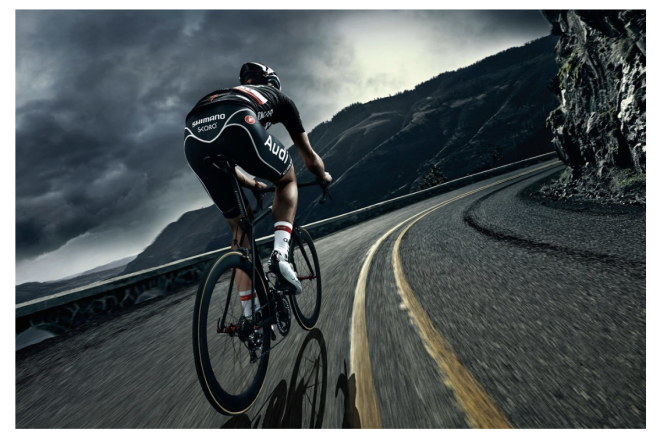- Change theme
Why Flat-Bar Road Bikes Haven’t Taken Off

Cyclists that seek speed and long-distance performance will find this design appealing.
02:01 15 January 2025
Most people, when we discuss road bikes, generally imagine a sleek, high-performance racing bike, a lightweight frame, thin tires, and a rider leaning forward as if ready to dash across a race. Designed with speed in mind—optimized to lower air resistance and rolling friction—traditional road bikes fit smooth, paved roads. Cyclists that seek speed and long-distance performance will find this design appealing. But in recent years, a new kind of bike—the flat-bar road bike—has progressively attracted interest and is starting to take center stage. This begs the issue: why has the conventional road bike never truly caught on with a larger audience while flat-bar road bikes are progressively acquiring momentum?
We must thus examine the design and use situations of these two kinds of bikes in order to respond. Designed with one primary objective in mind—speed on smooth pavement—traditional road bikes To cut air drag, they have lightweight frames, drop handlebars, and a riding stance that's forcefully forward-leaning. Particularly for long-distance riding, the narrow tires are perfect since they aid in reducing rolling resistance. On well-maintained roads, where the performance and speed are difficult to surpass, many racers or long-distance riders select road bikes.
Still, the conventional road bike has certain disadvantages. The design thus emphasizes speed, compromising comfort and adaptability. Long rides can cause discomfort in the back and neck, due in great part to the low handlebars and aggressive riding posture. Furthermore, the narrow tires perform poorly on uneven ground even if they are quick on straight highways. Riding a classic road bike can rapidly become difficult, whether it's gravel, dirt roads, or even little road bumps. Many cyclists find themselves too cautious, particularly when riding through cities or on less-than-perfect road surfaces, worried that running across a pothole or loose gravel will cause a crash.
Here the flat-bar road bike is useful. Gravel bikes basically emerged as a reaction to the restrictions of conventional road bikes. Inspired by adventure and cyclocross bikes, gravel bikes present a design that combines off-road bike adaptability with road bike speed. Gravel bikes have flat handlebars, unlike drop handlebars on conventional road cycles, which offer a more straight and natural riding position. Longer rides will be more pleasant if this design lessens the tension on your neck, wrists, and back. Gravel bikes stand out mostly for their larger tires, which let them negotiate a range of terrains, from smooth asphalt to gravel roads and even moderate off-road situations. For riders seeking a more flexible bike able to handle anything from weekend activities to urban commuting, this makes them an excellent alternative.
One of gravel bikes' main selling propositions is their adaptability over conventional road bikes. Gravel bikes shine in offering a more pleasant and flexible ride, whether your trip is a weekend ride or one through the city. Over uneven ground, the bigger tires provide a smoother experience by absorbing shocks and bumps, therefore relieving you of concern regarding every pothole or gravel patch you come across. Particularly for beginners or those who give stability first priority, the flat handlebars also provide cyclists superior control, which simplifies riding the bike. Gravel bikes are far more sensible in metropolitan settings since they are less prone to problems like uncomfortable jarring from cracked pavement or unanticipated road hazards.
The gravel bike also has great adaptability. These bikes excel on gravel walks, dirt trails, and even some light off-road terrain in addition to being appropriate for concrete roads. Traditional road bikes find difficulty in this capacity to fit different riding surroundings. If you prefer a variety of riding experiences, a gravel bike provides the best of both worlds: it can handle more difficult terrain when needed but is quick on smooth roadways. Gravel bikes attract many riders because they provide a good mix between speed, comfort, and adaptability—perfect for individuals who wish to enjoy several kinds of rides.
Obviously, this does not mean that gravel bikes are the best winner; conventional road bikes remain rather important. A classic road bike is still the finest choice for riders who are concentrated on maximum speed, racing, or long-distance cycling on perfectly paved roads. Regarding road bike wheelsets, road bikes are the fastest among all others. A clear choice for competitive cycling and performance-oriented cyclists is the lightweight, rigid wheel since it improves aerodynamics and handling at high speeds. Moreover, the sleek frame and aggressive attitude of a road bike appeal to people who give professionalism and competitiveness top priority in their riding experience.
Ultimately, flat-bar road bikes' great comfort, adaptability, and capacity to negotiate a wide spectrum of terrain help to explain their rising appeal. For regular riders who appreciate flexibility and a seamless ride across challenging roads and distances, they provide a more complete answer. Conversely, classic road bikes still shine in specialist fields, especially for people who value performance and speed on smooth, paved roads. Road bikes and gravel bikes will probably coexist as cycling culture develops and diversifies since each serves various requirements and tastes in the riding community. The main lesson is that the gravel bike's development reflects a move toward more sensible, all-around bikes for the contemporary rider in response to changing needs of cyclists.
